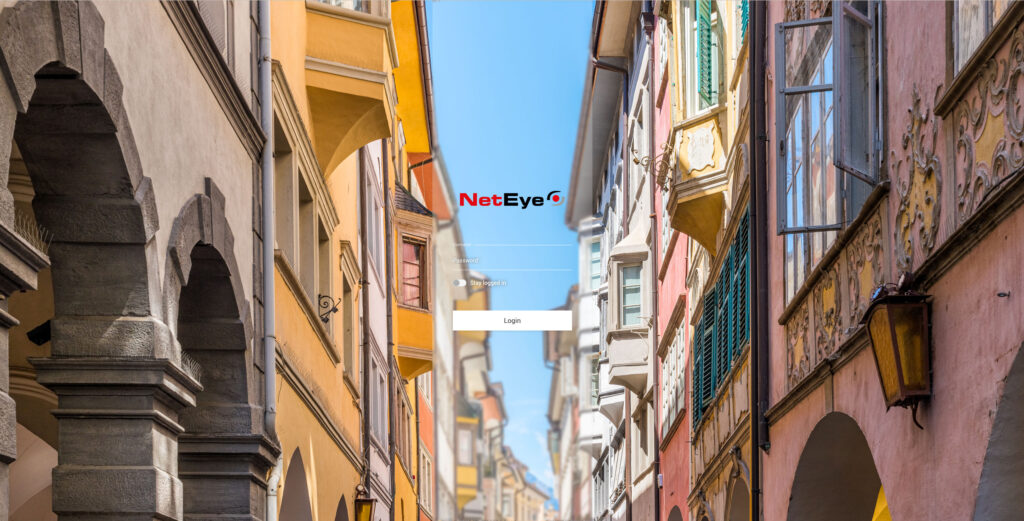NetEye 4.31 Release Notes
Welcome to version 4.31 of our NetEye v4 Unified Monitoring Solution.

In this new release, NetEye welcomes us with the beautiful colors of “Via dei Portici” in the Altstadt “Old City” of Bolzano. Since 1180 it is one of the oldest streets in the city, hosting a lot of trade activities due to its position on the first Roman road to cross the Alpine range. Some of the authentic buildings, like the old city hall and the ancient merchant center, are still a part of the street, and have been transformed into an interesting museum. In addition to the historical beauties of that place, “Via dei Portici” is still a good choice for shopping: the whole street is full of nice boutiques that sell everything from books to clothes.
Monitoring – Detection
Tornado – New Carbon UI
Our main focus is to make it easy to configure Tornado for the final NetEye users.
To reach this goal we are improving the Tornado Carbon web GUI.
In this release, we implemented the possibility to create, edit, reorder, and delete Tornado rules.
We also improved the usability of the GUI which allows to edit the specifications of the rules
such as “Where” and “With” sections.
VMD update to 1.7.1
We updated the VMD module to the 1.7.1 version.
From now on it is possible to use all the latest VMD features such as the export REST API for virtual machines, hosts, and data stores.
It has been added also disk and storage-related aggregations in the virtual machines table.
For the complete list of features and bug fixes please visit the official GitHub page.
SIEM – Log Management
NetEye 4.31 updates the Elastic Stack from version 7.17.9 to version 8.8.2.
This notable upgrade brings a wide variety of new features and bugfixes, both built-in in the Elastic Stack, such as a faster search experience, as well as in the configuration provided by NetEye, which, for example, now enforces the compatibility with the Elastic Common Schema for Logstash and exploits the power of Data Streams as the output of its pipelines.
Moreover, to fully exploit the high availability of cluster installations, we created a dedicated rolling upgrade and update procedure for the Elastic Stack, to comply with the directions provided by Elastic and to focus on avoiding downtime, ensuring logs can be processed and ingested also during upgrades and updates.
To discover all the most notable changes brought by the upgrade and ensure the compatibility of your systems, please visit our upgrade guide, the official Elastic Stack release notes, and breaking changes.
User Guide
Product Security Policy
In order to prove that we maintain quality and high security standards within NetEye, Product Security Policy is from now on available as a part of the NetEye User Guide.
In Security Policy you will be able to find the answers to questions like ‘How do we resolve security bugs’ and ‘What are the timeframes we commit to’. It includes Bugfix Policy which is applied every time a security bug is discovered and provides directions for reporting a security vulnerability with proper definitions so that customers can be sure of reporting an actual security bug.
NetEye Command
A dedicated section listing all NetEye commands that are used to carry out various NetEye tasks has been moved to Getting Started block of the User Guide.
Previously available under NetEye Update & Upgrade guide, the NetEye Command section has grown to include much more valuable commands than it takes for aforementioned procedures.
Visual Monitoring with Alyvix
In order to improve the UX for those who start working with the Alyvix Service within NetEye, the Alyvix Node setup procedure provided in the NetEye User Guide was revisited and aligned with the official Alyvix documentation.
Tornado
The improvement of the Tornado User Guide has started, with the goal of achieving a structure more oriented to satisfy User needs.
We have re-organized the information contained in it creating a Concepts section that describes the main Tornado parts and terms, a Configuration section that should help the User set up his own Tornado Processing Tree, and an Advanced Topics part containing technical references to development logic and to how Tornado works as a software.







